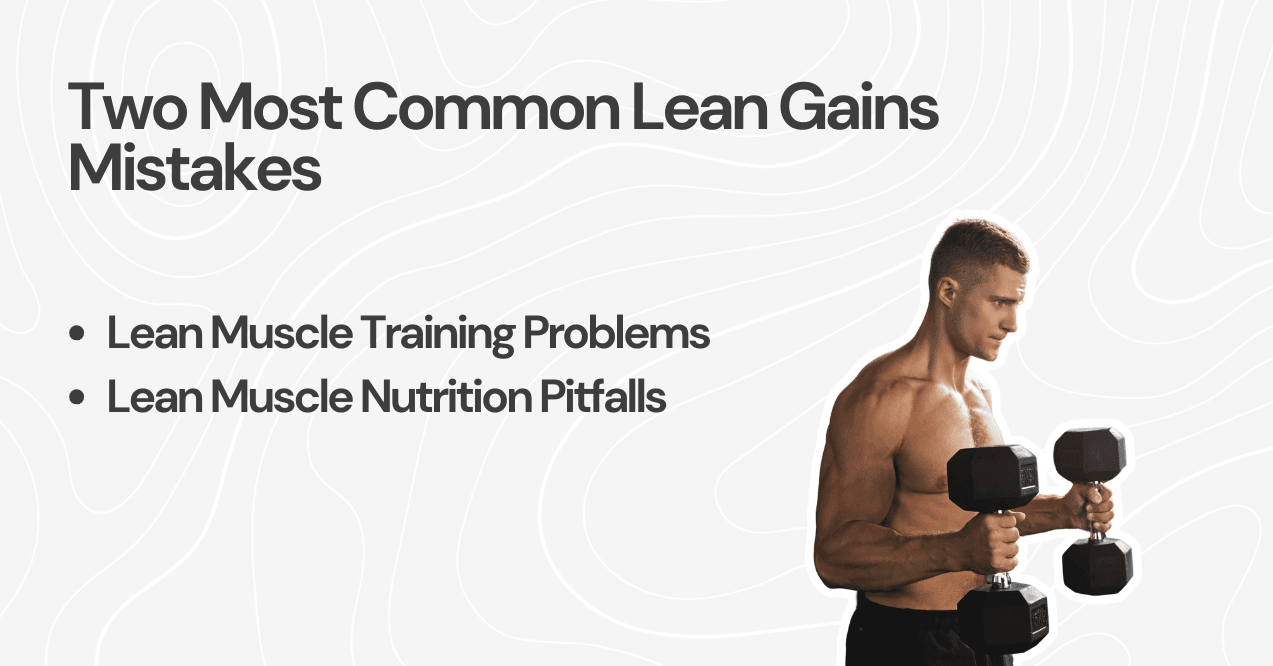Lean Muscle vs Bulk: The Key Differences
When it comes to lean muscle vs bulk, choosing your path can feel like standing at a fitness crossroads. Both approaches offer unique benefits and challenges for your body transformation journey. Let’s explore what sets these two muscle-building strategies apart and help you pick the right one for your goals.
Key Takeaways:

What Is a Bulk Body Type?
The term “bulk body type” likely refers to the appearance and physical build of someone during the muscle-building or “bulking” phase often discussed in fitness and bodybuilding. However, it’s important to note that this isn’t a formal scientific body type classification.
This term is most commonly used in the context of intentional weight gain through resistance training and increased caloric intake, rather than as a natural body type classification.
What Is a Lean Body Type?
A lean body type typically refers to a physique characterized by:
- Low body fat percentage
- Visible muscle definition
- Minimal excess tissue
- Often slender or athletic appearance
This body type balances muscle development with fat loss, creating that coveted “cut” look. Getting lean isn’t just about losing weight – it’s about maintaining muscle while reducing body fat to reveal more definition.
Lean Muscle vs Bulk (Four Noticeable Differences)
The main difference lies in the approach to muscle building and body composition. While both methods aim to build strength, they take different paths to get there. A lean bulk approach tries to minimize fat gain while building muscle, requiring more precise nutrition and hybrid training programs than traditional bulking.
But what if you’re trying to build muscle while keeping your calorie intake low? Can You Build Muscle in a Calorie Deficit? The answer depends on your training experience, nutrition, and recovery. Beginners often see signs of gaining muscle and losing fat while eating in a deficit, as their bodies respond quickly to new resistance training. However, more advanced lifters may find muscle growth more challenging without a calorie surplus. No matter your approach, prioritizing high-quality protein sources, like bone broth supplements, can support muscle maintenance and recovery.
1. Visual Differences Between Bulk and Lean Physiques
Key visual distinctions between physique types:
For bulk physiques:
- Fuller muscle bellies with a more imposing presence
- Thicker limbs and overall larger frame appearance
- Less visible muscle separation due to higher body fat
- More rounded, powerful look in both relaxed and flexed states
For lean physiques:
- Clear muscle definition with visible striations
- More pronounced vascularity across major muscle groups
- Athletic, streamlined appearance
- Visible muscle separation, especially during movement
2. Training Differences Between Lean Muscle vs Bulk
If you’re wondering how to bulk lean, your training style needs specific adjustments from traditional bulking. Here’s how the approaches differ:
Bulk training focus:
- Heavy weights (75-85% of 1RM) with 4-8 reps per set
- Rest periods of 2-3 minutes between sets
- Emphasis on compound movements like hack squats and leg press, deadlifts, or bench press
- Limited cardiovascular work to preserve energy for muscle growth
Lean training approach:
- Moderate weights (65-75% of 1RM) with 8-12 reps per set
- Rest periods kept to 60-90 seconds
- Mix of compound and isolation/somatic exercises
- Strategic cardio integration for fat management
- For those looking to fine-tune their nutrition alongside their training, using an intermittent fasting calculator can help plan your eating windows for optimal fat loss while building lean muscle.
3. Nutritional Differences Between Lean Muscle vs Bulk
Nutrition plays a huge role in both approaches. Many athletes explore various protein sources, including combining collagen and bone broth together for optimal recovery. If you’re curious about specific nutritional strategies, you might want to learn more about how much collagen is in bone broth and its benefits for muscle recovery.
The nutritional blueprint for each approach:
Bulk nutrition:
- Daily calorie surplus of 500+ calories
- Protein intake at 2.0-2.2g per kg of body weight
- Higher carbohydrate intake (50-60% of total calories)
- Moderate fat intake (25-30% of total calories)
If you are curious about bulk nutrition, you might wonder if you can drink protein shakes without working out. Read our bonus article to answer this question!
Lean nutrition:
- Modest calorie surplus of 200-300 calories
- Protein intake at 2.2-2.4g per kg of body weight
- Moderate carbohydrates (40-50% of total calories)
- Lower fat intake (20-25% of total calories)
For optimal recovery and performance, quality protein sources matter. Trumeta Bone Broth Protein stands out as a concentrated protein option for active individuals. It combines traditional wisdom with modern nutrition science, delivering collagen protein that supports training results.

This versatile supplement fits perfectly into both bulking and leaning protocols. Whether you’re looking to support your resistance training, maintain skin health, or enhance focus during workouts, bone broth protein offers a comprehensive approach. Plus, it’s an excellent option for those following a whole-food-focused nutrition plan.
4. Endurance Between Lean Muscle vs Bulk
A common concern from those starting their bulk is can i run while on a bulk? The answer depends on your goals and approach. Traditional bulking might reduce endurance and agility due to the extra body weight and reduced cardiovascular focus. However, you can maintain some cardio capacity by incorporating strategic conditioning work into your routine.
Performance considerations for each approach:
For bulking:
- Reduced running economy due to weight gain
- Potentially decreased flexibility
- Lower endurance capacity
- Increased absolute strength
For lean physiques:
- Better running economy
- Maintained flexibility and mobility
- Higher endurance capacity
- Improved relative strength
How to Build Lean Muscle?
Building lean muscle for females or men requires a strategic approach combining smart training and precise nutrition. Your workouts should blend resistance training with strategic cardio, focusing on full-body movements that engage multiple muscle groups.
Essential components for lean muscle development:
Training Blueprint for Lean Muscles
- Full-body workouts 3-4 times weekly
- HIIT sessions 2-3 times weekly
- Focus on perfect form and tempo control
- Progressive overload with moderate weights
Nutrition Strategy for Lean Muscles
- Maintenance calories or slight surplus
- High protein foods every 3-4 hours
- Strategic carb timing around workouts
- Hydration at 3-4 liters daily
What to eat before a HIIT workout? A small, balanced meal combining protein and carbs, like a banana with almond butter or Greek yogurt with berries, can provide the energy needed for high-intensity sessions.
How to Bulk?
Successful bulking involves more than just eating everything in sight. Focus on progressive overload in your training, gradually increasing weights while maintaining proper form. Also, to enhance you’re performance, take creatine even when you’re not working out.
Key elements of effective bulking:
Training Structure for Bulking
- Heavy compound movements
- Progressive weight increases
- Focus on major muscle groups
- Adequate rest between sets
Nutrition Framework for Bulking
- Calculated calorie surplus
- Protein-rich meals every 3-4 hours
- Complex carbs for sustained energy
- Healthy fats for hormonal support
Three Most Common Bulking Mistakes

The question “how do you bulk?” often leads to a complex journey of decision-making. Many lifters, eager for quick results, fall into predictable traps that can stall progress or lead to unnecessary fat gain. Here’s what to watch out for in your bulking phase:
1. Bulking Training Missteps
Your approach to training forms the foundation of muscle growth. Many lifters compromise their results through these crucial errors. The most damaging mistakes often stem from ego-driven training choices and poor programming decisions:
- Going too heavy too soon without mastering form, risking both progress and safety
- Neglecting compound movements in favor of isolation work, limiting overall growth potential
- Excessive volume leading to poor recovery and diminished returns
- Skipping deload weeks when strength plateaus, missing vital recovery opportunities
- Training too close to failure in every session, compromising long-term progression
2. Bulking Nutrition Errors
The kitchen often makes or breaks a successful bulk. While eating more sounds simple, strategic nutrition requires more thought than simply increasing calories. These nutrition mistakes can seriously impact your results:
- “Dirty bulking” with low-quality food choices, leading to poor nutrient intake
- Excessive calorie surplus beyond muscle-building needs, resulting in unnecessary fat gain
- Inconsistent meal timing around workouts, missing key growth windows
- Relying too heavily on supplements over whole foods, neglecting micronutrient needs
- Inadequate protein distribution throughout the day, limiting muscle protein synthesis
3. Bulking Progress Tracking Issues
Your measuring methods determine your ability to make informed adjustments. Many lifters fall short in tracking their progress effectively, leading to misguided decisions:
- Focusing solely on scale weight without considering body composition
- Ignoring key body composition changes that signal progress or problems
- Not tracking strength progression across main lifts
- Failing to adjust calories based on real-world results
- Using inconsistent measurement methods, making progress hard to gauge
Two Most Common Lean Gains Mistakes

How to bulk lean approach demands precision and patience, yet many enthusiasts compromise their results through these common mistakes:
1. Lean Muscle Training Problems
A lean approach requires balancing multiple training variables. The following mistakes often derail progress toward achieving that coveted lean, muscular physique:
- Excessive high-intensity cardio that interferes with muscle retention
- Insufficient resistance training volume to stimulate growth
- Poor exercise selection that fails to maintain muscle mass
- Workout density that’s too high without adequate recovery periods
- Training volume that doesn’t align with available energy
2. Lean Muscle Nutrition Pitfalls
The nutrition game changes significantly when pursuing lean gains. These dietary mistakes can quickly stall progress or lead to muscle loss:
- Aggressive calorie restriction that compromises muscle maintenance
- Protein intake falling below optimal levels during energy restriction
- Poorly timed nutrients around training sessions
- Complete elimination of essential fats, affecting hormonal balance
- Irregular meal timing that impacts muscle protein synthesis
Conclusion
Your choice between bulking and staying lean shapes your entire fitness approach. Both paths lead to strength and improved fitness through different routes. Consider your current condition, lifestyle demands, and long-term vision when selecting your strategy.
Many successful athletes cycle between these approaches throughout their fitness journey. The most effective strategy aligns with your current goals while fitting into your lifestyle. Consistency with your chosen approach, combined with proper form and recovery, creates the foundation for long-term success.
Create a moderate calorie surplus (200-300 calories above maintenance), prioritize protein (2g per kg bodyweight), focus on compound lifts, and keep cardio strategic. Track progress weekly and adjust calories based on your gains to minimize fat accumulation.
Yes, you can run while bulking. Keep the runs moderate (2-3 times weekly) and adjust your calorie intake to account for the extra activity. Focus on shorter, higher-intensity sessions rather than long-distance runs to preserve energy for muscle growth.
No, strategic cardio won’t destroy muscle tissue. The key is moderation and proper nutrition. Maintain protein intake, fuel workouts appropriately, and limit high-intensity cardio to 2-3 sessions weekly. Recovery between sessions prevents muscle loss.
Advertisement. This site offers health, wellness, fitness and nutritional information and is designed for educational purposes only. You should not rely on this information as a substitute for, nor does it replace, professional medical advice, diagnosis, or treatment. If you have any concerns or questions about your health, you should always consult with a physician or other health-care professional. Do not disregard, avoid or delay obtaining medical or health related advice from your health-care professional because of something you may have read on this site. The use of any information provided on this site is solely at your own risk.







